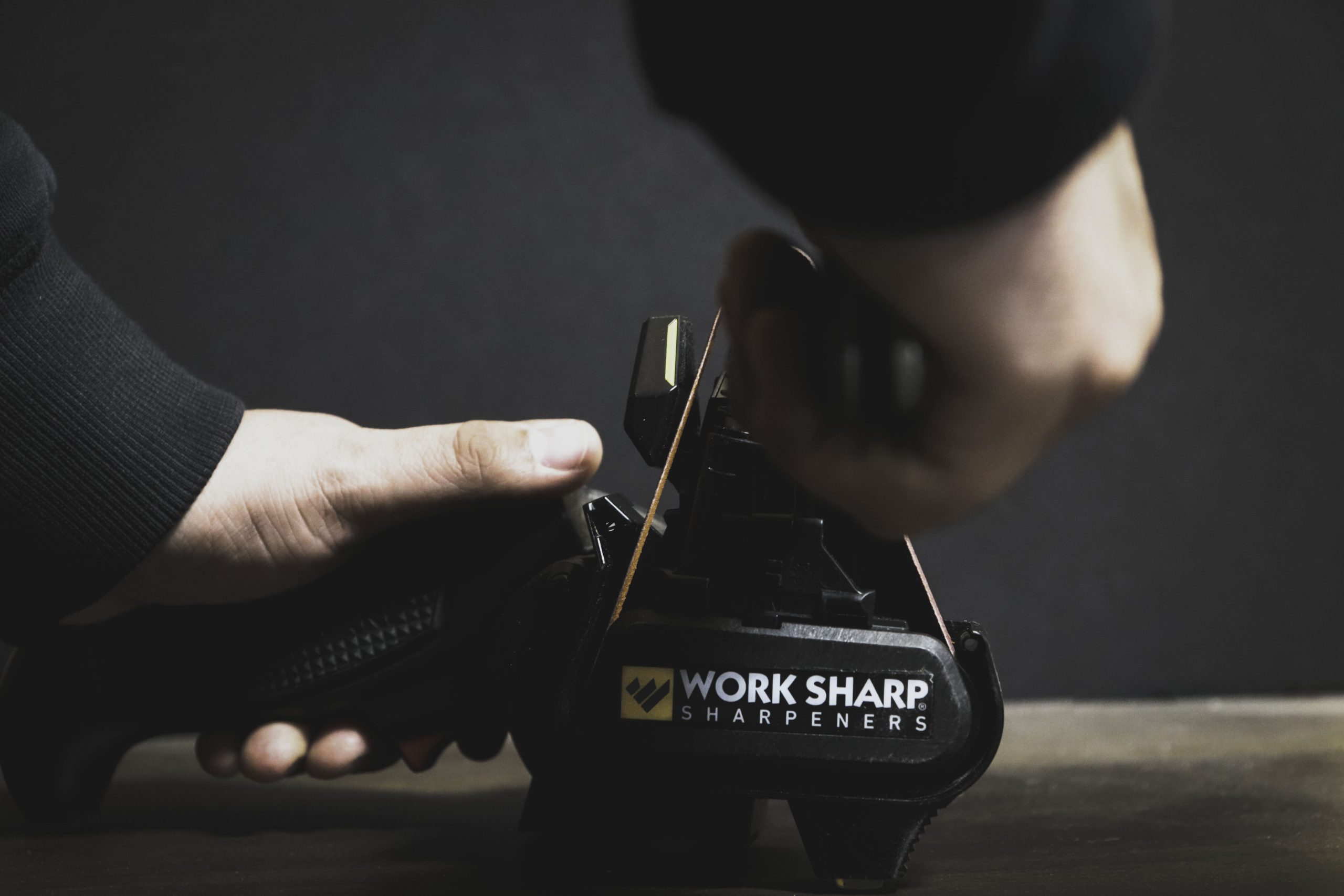In this guide, we will share what we think about sharpening angles.
Does the angle you sharpen at matter?
The Short answer, yes.
The long answer? Yes, but…
When you sharpen your knives, you can have some degrees of variation in your sharpening angle; It all depends on what the knife’s geometry looks like. Slimmer knives take a thinner edge well, whereas thicker knives typically need a thicker edge. This is all defined in the principles of edge geometry, which dictates the proper range of sharpening angles that would be best for your knife.
The basics of edge geometry pertain to primary and secondary grinds, BTE (behind the edge) thickness (also referred to as TBE, for Thickness behind the edge), and DPS (degrees per side). Spine thickness and grind height also play a significant role in determining how well the knife will cut.
Primary and Secondary grinds refer to the grinds that make up the knife, the primary grind being the grind leading up to the edge, whereas the secondary grind (also referred to as the edge grind) is the grind of the edge itself. There are some knives, referred to as Zero-Grind or Scandi Grind knives have a primary grind that functions as the edge.
The Thickness of the spine and BTE width can affect the final sharpening angle and cutting performance by making the knife either thicker or thinner overall. The Wider it is BTE the higher the edge goes, making it so that wider knives have a higher BTE width and therefore need a wider grind to achieve optimal edge geometry.
DPS is measured per side instead of measuring the edge overall (also referred to as inclusive). Typically, when your sharpening angle is at 20 Degrees, it refers to DPS, therefore it has an inclusive edge angle of 40 Degrees. The DPS of a knife is what directly affects cutting performance with lower angles having a thinner cutting surface, making it easier to cut with using minimal effort. The only downside is that the lower the DPS the more fragile the edge is.
So What angle should I sharpen my knives at?
Your sharpening angle will depend on what you want to use the knife for and how thick the knife is. If you want a fine cutting knife you would need a lower angle, and you would typically need a thinner knife overall. Harder cutting tasks require a sturdier edge, which happens at higher angles and higher thickness knives. If you have a thick knife, you can still make it cut well, but you may be stuck sharpening it to a low angle which could take quite a while. This is why scandi grinds are used in outdoor knives since they have a thinner edge but a thicker blade, making it a sturdy and efficient slicer.
there are many different grinds and thicknesses that would work best with different uses, mini sex doll such as when razor blades have a hollow grind with a thin edge, which works well for cutting hair, but when applied to something like an axe, would lead to a higher chance for breaks, bends, and stress fractures.
Here is a quick guide to which sharpening angle you should use:
- <15 Degrees is for very delicate cutting and slicing; anything lower than 15 degrees is very weak, but an efficient slicer. This angle range is typically only seen in razors.
- 15 to 18 Degrees is for most high-performance Japanese kitchen knives. It makes a sharp edge that produces a smooth cut, but the edge is slightly weaker. 18 to 20 Degrees is for most kitchen, pocket, and outdoor knives. It provides a sturdier edge that still cuts well. This is usually the angle range used to get a “razor-sharp” edge.
- 20 to 25 Degrees is for knives that need to have a fine cutting edge and more of a focus on durability. This angle range is typically used in outdoor knives and with chopping knives.
- 25 to 30 Degrees is for harder use outdoors and hunting knives; it offers higher durability and a decently sharp edge. It may not cut as well as lower angles depending on the knife’s geometry, but you may not be able to notice the difference.
- 30< Degrees is for a blade that you would need higher durability for, such as bush crafting knives, machetes, cleavers, and axes. It won’t be able to slice or cut as well, but it will be able to withstand more force on the edge itself.
*Please note: Your sharpening angle will always depend on the edge geometry of the knife. The thinner the knife the better it can take a thin edge, and the thicker the knife the better it can take a thicker edge.*
What angle do you normally sharpen your knives at? Did you learn anything you didn’t know before from reading this? Let us know! We’d love to hear your feedback.
Product shown in picture: Work Sharp Knife and Tool Sharpener
A more in-depth guide to sharpness and cutting ability from Knife Steel Nerds.


